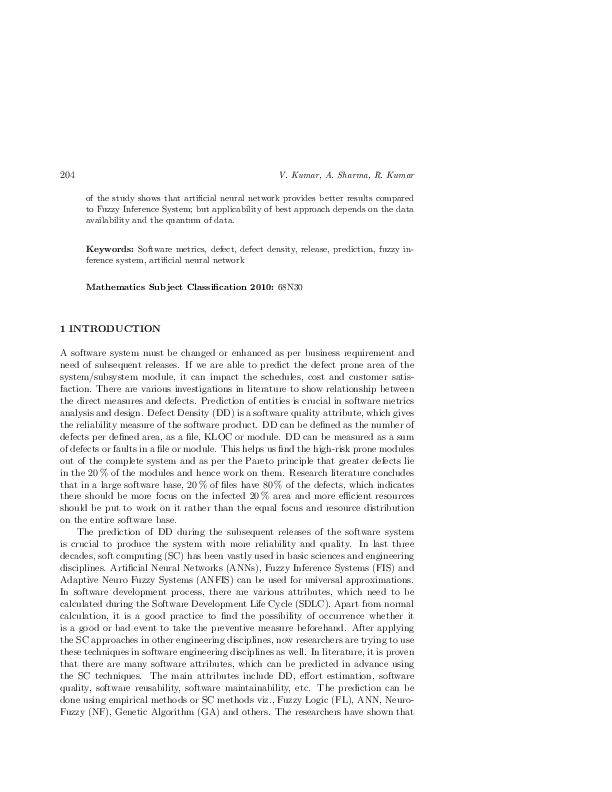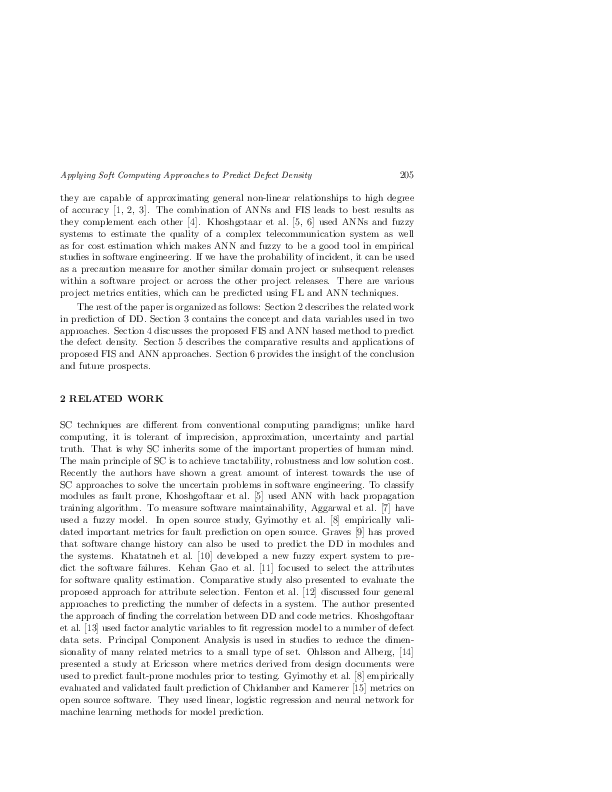Applying Soft Computing Approaches to Predict Defect Density in Software Product Releases: An Empirical Study
keywords: Software metrics, defect, defect density, release, prediction, fuzzy inference system, artificial neural network
There is non-linear relationship between software metrics and defects, which results to a complex mapping. Therefore, to focus on the defect density area, it is a critical business requirement of effective and practical approach, which can help find the defect density in software releases. Soft computing provides a better platform to solve the non-linear and complex mapping problem. The aim of this paper is to formulate, build, evaluate, validate and compare two main sections of soft computing, fuzzy logic and artificial neural network approaches in prediction of defect density of subsequent software product releases. In this research, these two approaches are formulated and applied to predict the existence of a defect in file of software release. Both approaches have also been validated against various releases of two commercial software product release data sets. The validation criteria include mean absolute error, root mean square error and graphical analysis. The analysis of the study shows that artificial neural network provides better results compared to Fuzzy Inference System; but applicability of best approach depends on the data availability and the quantum of data.
mathematics subject classification 2000: 68N30
reference: Vol. 32, 2013, No. 1, pp. 203–224


